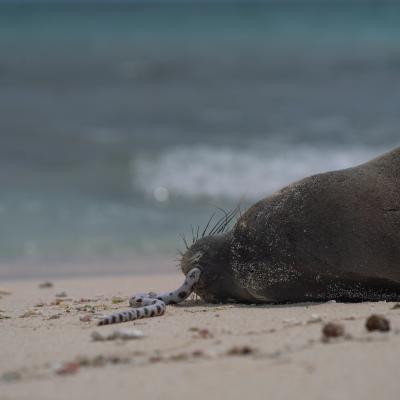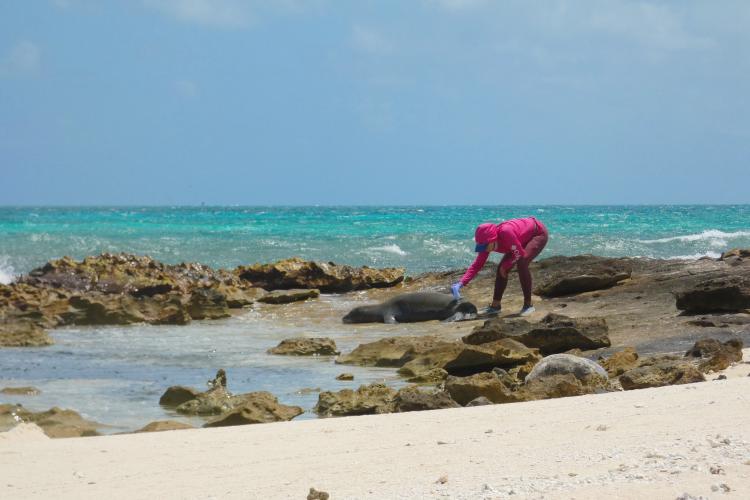170 Hawaiian monk seal pups born in Northern Hawaiian Islands last year, NOAA reports

Researchers documented 170 new Hawaiian monk seal pups born in 2023 around the Papahānaumokuākea Marine National Monument during their annual field camp.
Throughout August and September, a team from the National Oceanic Atmospheric Administration camped in the Northern Hawaiian Islands to assess the endangered species. Along with counting the new pups, NOAA also intervened on 27 monk seals to improve their survival.
Additionally, five of the mammals were rehabilitated and released back into the wild.
Of the pups counted in the monument, NOAA reported at least 159 were successfully weaned and 156 were tagged. Fifty of the animals were born on Lalo.
Among those that gave birth on Lalo was YC31, a 28-year-old female monk seal, that had her 19th pup. She takes the lead for the most recorded births of any monk seal. Two of her daughters, YE23 and YI27, also gave birth this past year, adding two additional grand pups to her growing family tree.
Annual field camps and tagging are necessary for monitoring population estimates. In 2022, NOAA researchers estimated the population size of Hawaiian monk seals, which is an endangered species, to be 1,605.
“The past year underscored just how important partners are to this large undertaking,” NOAA stated.
The Hawai‘i Department of Land and Natural Resources, U.S. Fish and Wildlife Service and the Papahānaumokuākea Marine Debris Project all contributed to monitoring and tagging efforts throughout the monument. The U.S. Fish and Wildlife Service rescued a seal without a clear path to the ocean due to aging infrastructure at Sand Island, Kuaihelani (Midway Atoll).
The Papahānaumokuākea Marine Debris Project team even removed an eel from the nose of a monk seal pup.
“One of the most important parts of researching any species, especially a species with low numbers, is to know exactly how many individuals exist in a population,” NOAA stated. “Without a way to tell individual animals apart, this can be incredibly difficult.”
To address this, researchers apply colored tags to a pup’s hind flippers after the animal has weaned. The tags are engraved with a unique number and letter series that, along with color, can be used to identify that particular seal.
Tag colors represent the place in Hawai‘i they were born.
Lalo (French Frigate Shoals) is home to approximately 20% of the Hawaiian monk seal population, with many pups born later in the year than at other sites. Researchers need to spend more time at Lalo to carry out life-saving interventions on monk seals. This is due to aging infrastructure from previous military installations and high rates of Galapagos shark predation.
Field teams and partners conducted 27 interventions to improve seal survival. This included:
- Translocating 22 weaned pups from historically high shark predation risk areas to Tern Island
- Rescuing two seals without a clear path to the ocean due to aging infrastructure at Tern Island
- Treating an injured juvenile female with antibiotics
Five Hawaiian monk seals were admitted to The Marine Mammal Center’s Hawaiian monk seal hospital, Ke Kai Ola, in Kailua-Kona for rehabilitation in 2022 and were released back into the wild in 2023 at Lalo and Kuaihelani.












